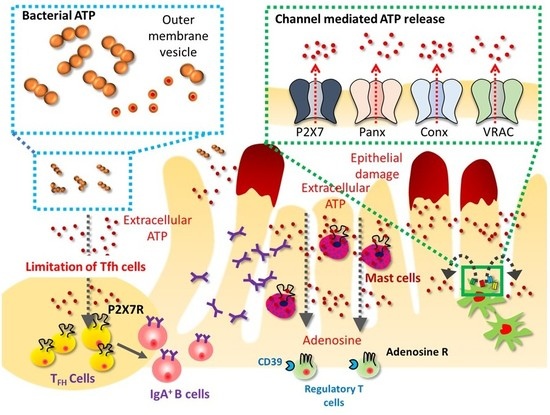ATP as a Pathophysiologic Mediator of Bacteria-Host Crosstalk in the Gastrointestinal Tract
Abstract
Share and Cite
Inami, A.; Kiyono, H.; Kurashima, Y. ATP as a Pathophysiologic Mediator of Bacteria-Host Crosstalk in the Gastrointestinal Tract. Int. J. Mol. Sci. 2018, 19, 2371. https://doi.org/10.3390/ijms19082371
Inami A, Kiyono H, Kurashima Y. ATP as a Pathophysiologic Mediator of Bacteria-Host Crosstalk in the Gastrointestinal Tract. International Journal of Molecular Sciences. 2018; 19(8):2371. https://doi.org/10.3390/ijms19082371
Chicago/Turabian StyleInami, Akie, Hiroshi Kiyono, and Yosuke Kurashima. 2018. "ATP as a Pathophysiologic Mediator of Bacteria-Host Crosstalk in the Gastrointestinal Tract" International Journal of Molecular Sciences 19, no. 8: 2371. https://doi.org/10.3390/ijms19082371
APA StyleInami, A., Kiyono, H., & Kurashima, Y. (2018). ATP as a Pathophysiologic Mediator of Bacteria-Host Crosstalk in the Gastrointestinal Tract. International Journal of Molecular Sciences, 19(8), 2371. https://doi.org/10.3390/ijms19082371





